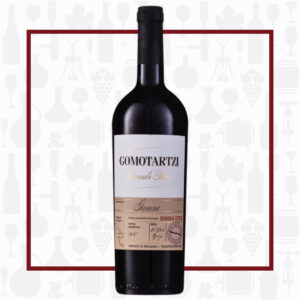Cellar Profile
Nestled along the banks of the Danube River, Bononia Estate is named for the ancient Roman Fortress that occupied the spot now known as the town of Vidin, where Roman armies brought vines for the cultivation of wine grapes. After careful soil analysis, the area was replanted to grape in 2013 and the first vintage was produced in 2016. The Danube River appellation of Bulgaria is a moderate to cool region, with warm, dry days and cold evenings during the growing season. This large diurnal shift, coupled with breezes from the Danube, allows for ecological viticulture. Utilizing organic practices in tandem with technological advances and a keen eye for sustainability, Bononia Estate crafts nervy, fruit-forward and balanced wines, focusing on Chardonnay, Sauvignon Blanc, Cabernet Sauvignon, Cabernet Franc and the exciting, vibrant, autochthonous local varietal, Gamza. Bulgarian wine has long been eschewed by “serious” wine drinkers as cheap, cheerful and forgettable. However, Bononia Estate is part of the modern landscape of Bulgarian winemaking, with a focus on fine wines as opposed to bulk production. The wine world is beginning to take notice!
Region
The Danubian Plain and the Thracian Lowlands are the only two winegrowing regions in Bulgaria. The former lies south of the iconic Danube River, with the Black Sea to the East, Serbia and Macedonia to the West. The area around the town of Vidin, where Bononia is located, was largely forgotten about for winemaking during the Soviet occupation of the country, when Bulgaria rose to 4th in the world in terms of production. Unfortunately, the wines were mass-produced, fruity and forgettable from a state-owned monopoly. No investment was made, at that time, in lower yield, cooler-climate viticulture. The region enjoys as many sunlight hours during the growing season as Northern Italy and Portugal, allowing for full ripening of both indigenous and international varieties. The movement of the Danube River, as well as the influence of the Black Sea, moderate heat during the day and keep the evenings cool, ensuring brilliant acid levels in the wines. The yields are remarkably small in Bulgaria, with an average of only 4.3 tons/ha; by comparison, the US averages 18 tons/ha. Jancis Robinson has noted the exceptional potential of this Northwestern part of Bulgaria and the wine world is starting to pay attention.
Vineyard
Planted in 2013 utilizing the Guyot training system, these vineyards are strategically placed just south of the Danube, along its banks. The fast flowing water and accompanying breezes keep the grapes cool and dry during the growing season. The soil has great drainage and is composed of dark loam created by the ancient forests surrounding the region. These are true cool climate vineyards, so canopy management is key to ensuring the grapes get enough sunlight.
Varieties
Also known as Kadarka elsewhere in the Balkans, Gamza has been around since antiquity and is grown mostly in Northwest Bulgaria. This autochthonous grape has thin skins, so is prone to rot and mold. This requires it to be planted in windy and hilly areas where the grapes will be dried and the air will not be as humid. This is why it is perfectly suited to the area around Vidin where Bononia lies. Gamza wines are medium-bodied, fresh and lively, with low to medium tannin levels. Stylistically, they are often compared to Cru Beaujolais or Oregon Pinot Noir.
Winemaking
Hand-harvested and sorted before a gentle pressing into stainless steel for fermentation with selected yeasts. There are manual punchdowns of the cap during maceration, but care is taken not to extract too many tannins or astringency.
Tasting Notes
A fruit-forward, inviting nose of wild berries, red plum, licorice and a touch of herbaceousness. On first sip, there is a pleasing sweetness, with the wild berries replaying, but joined by cranberry and rhubarb elements. The balance here is offered by generous acidity. There is some garrigue and earthy tones on the finish, but this is an easy-drinking sipper. Lightly chill for a patio red, or serve alongside deli sandwiches or turkey dinner with all the fixings.

 info@buyersandcellars.ca
www.buyersandcellars.ca
info@buyersandcellars.ca
www.buyersandcellars.ca